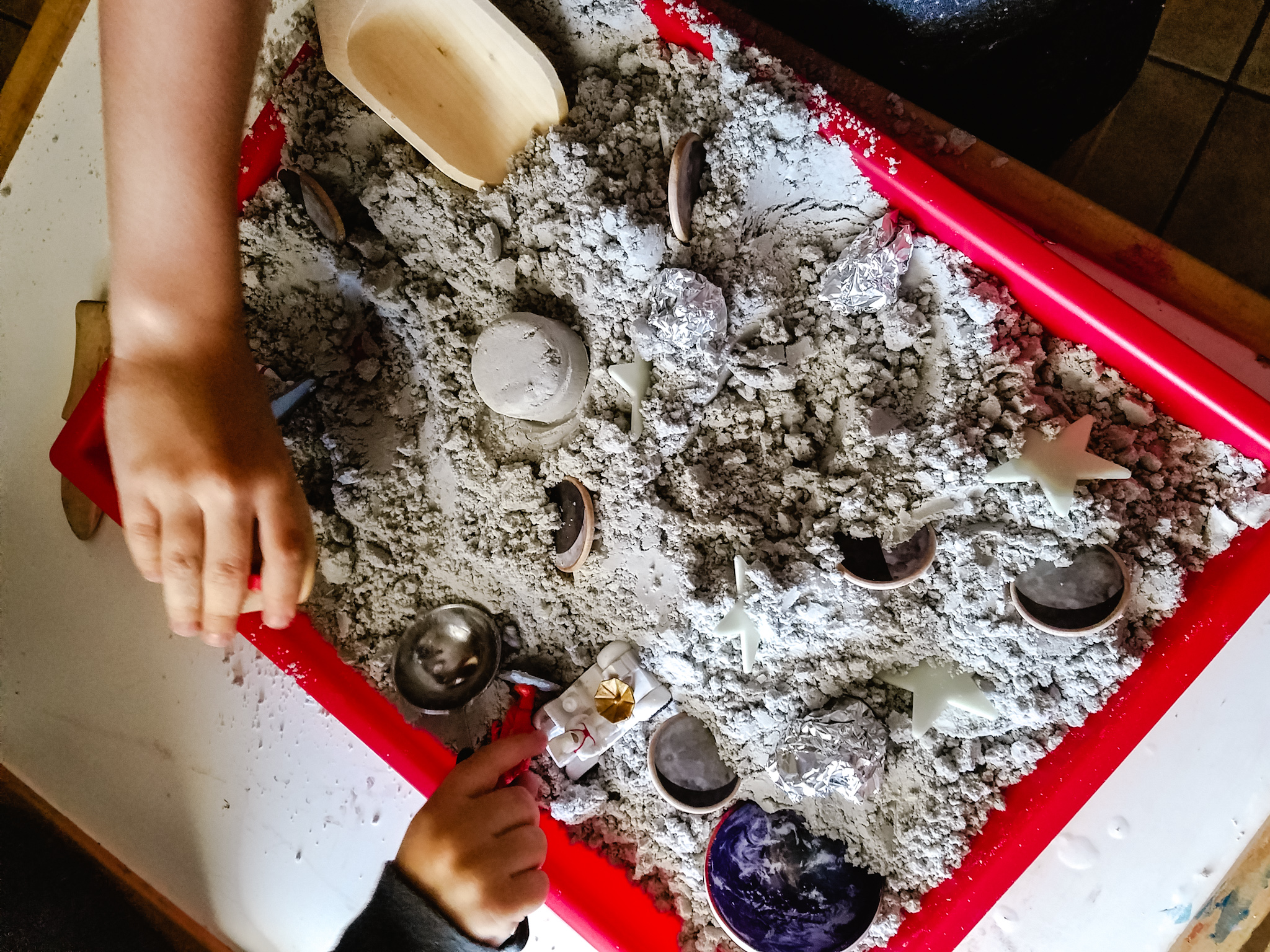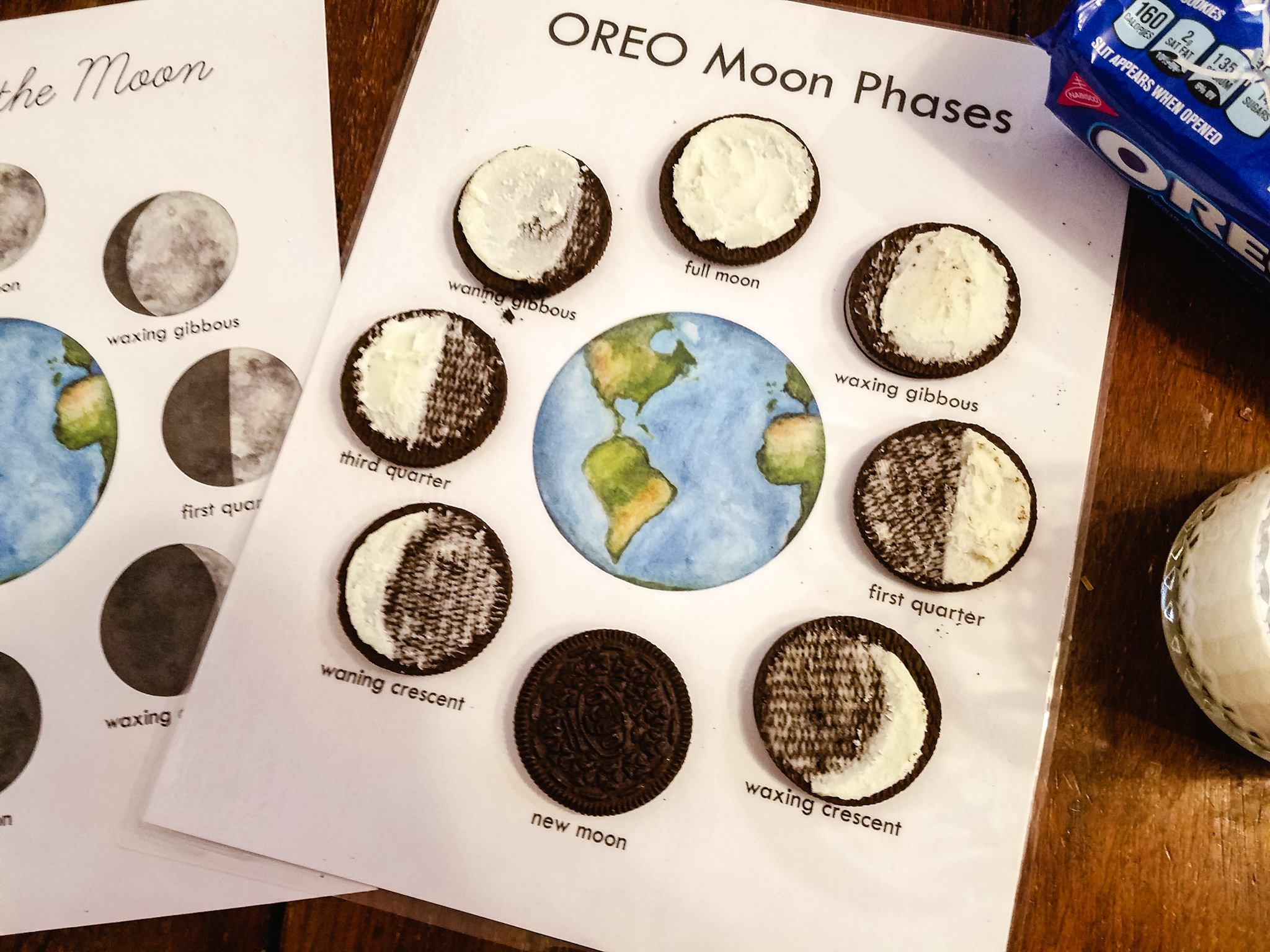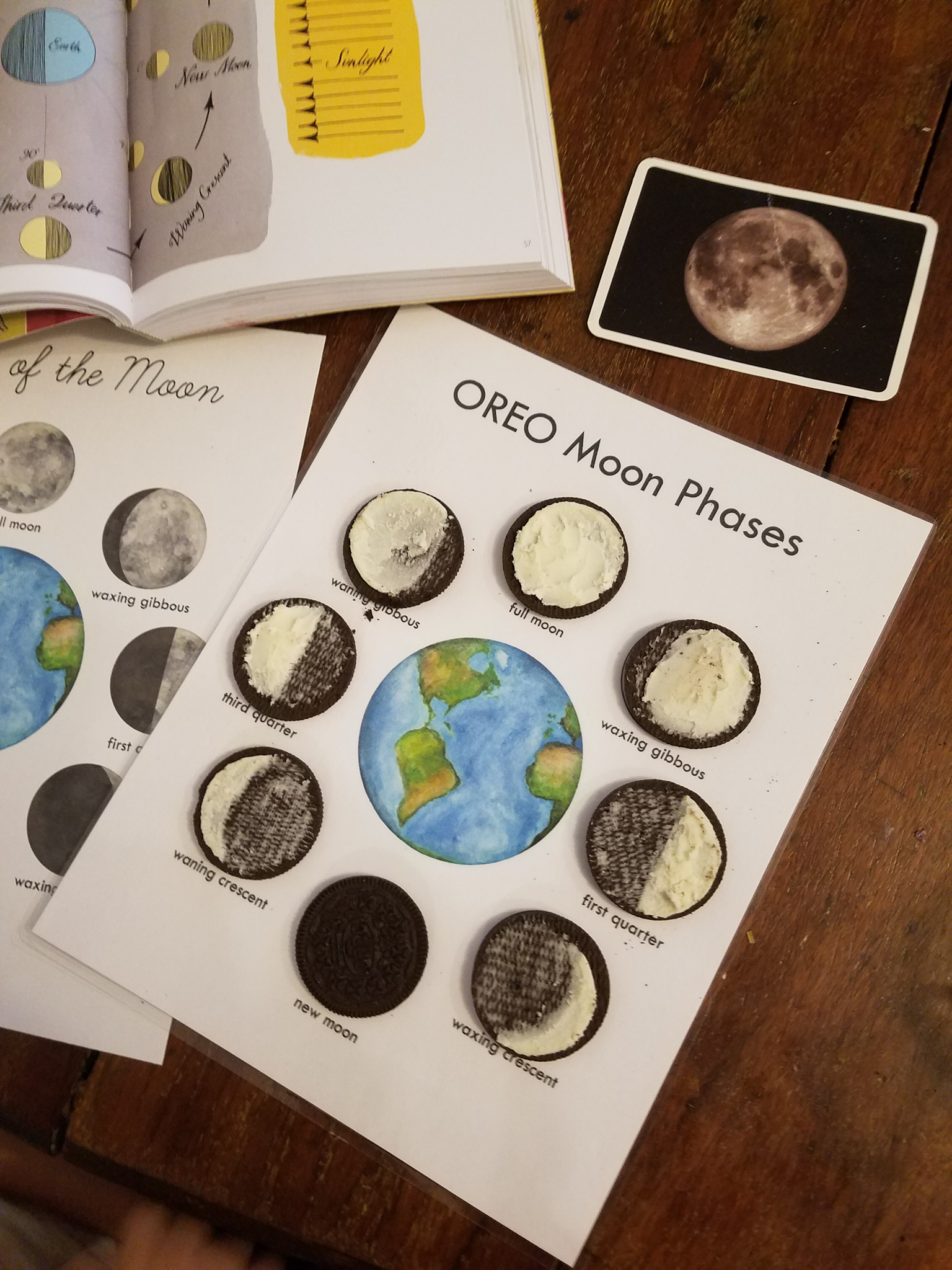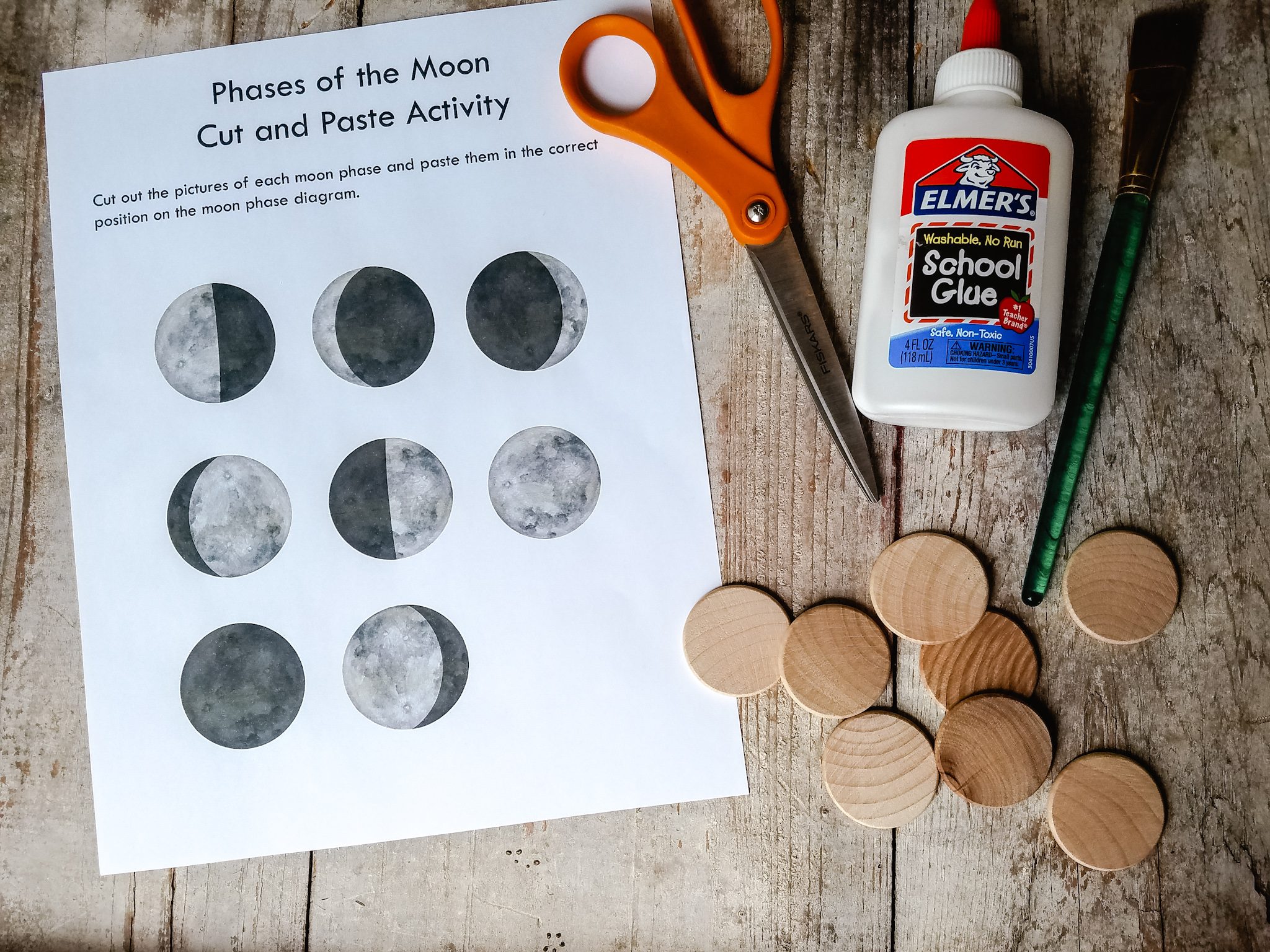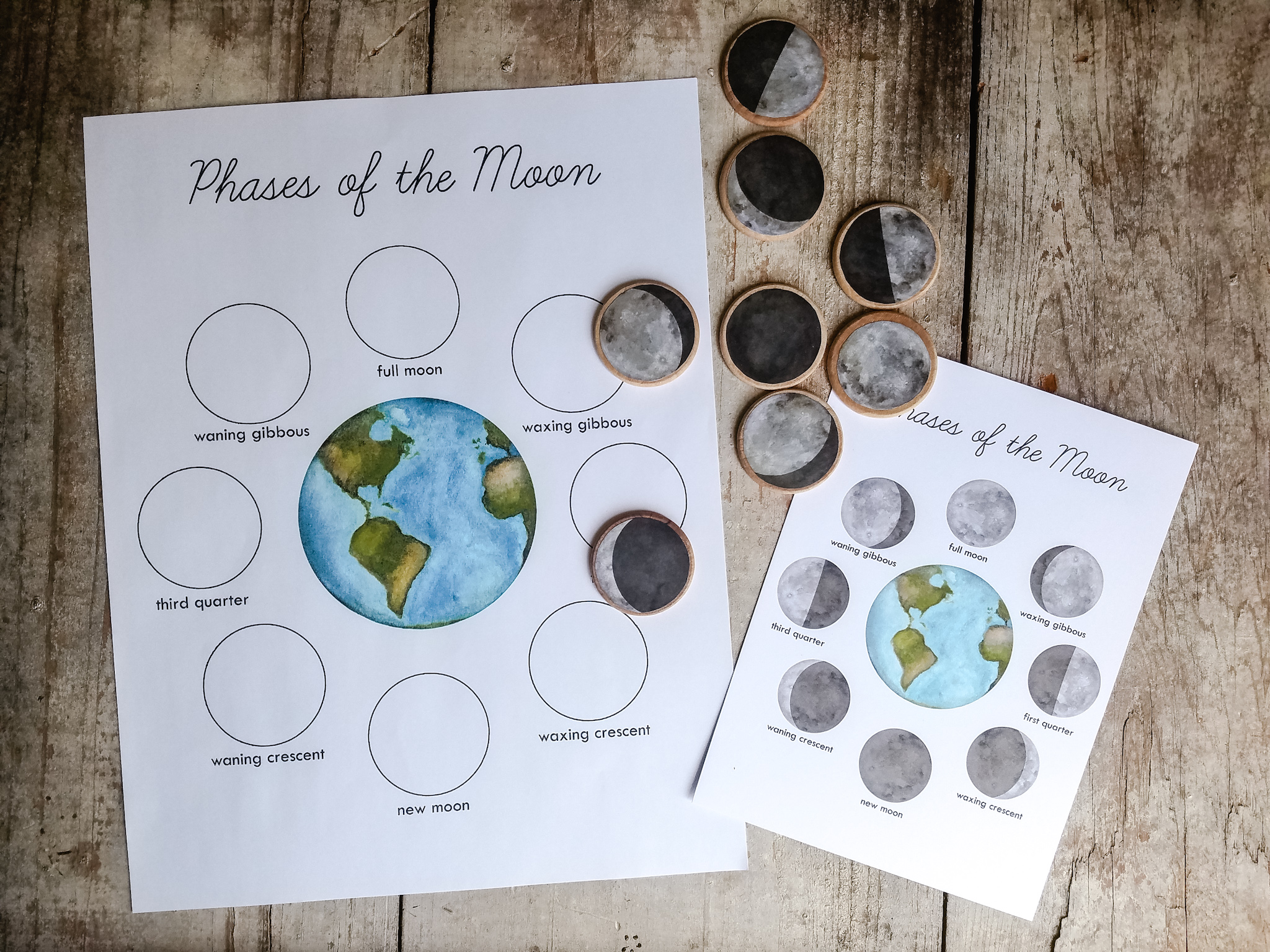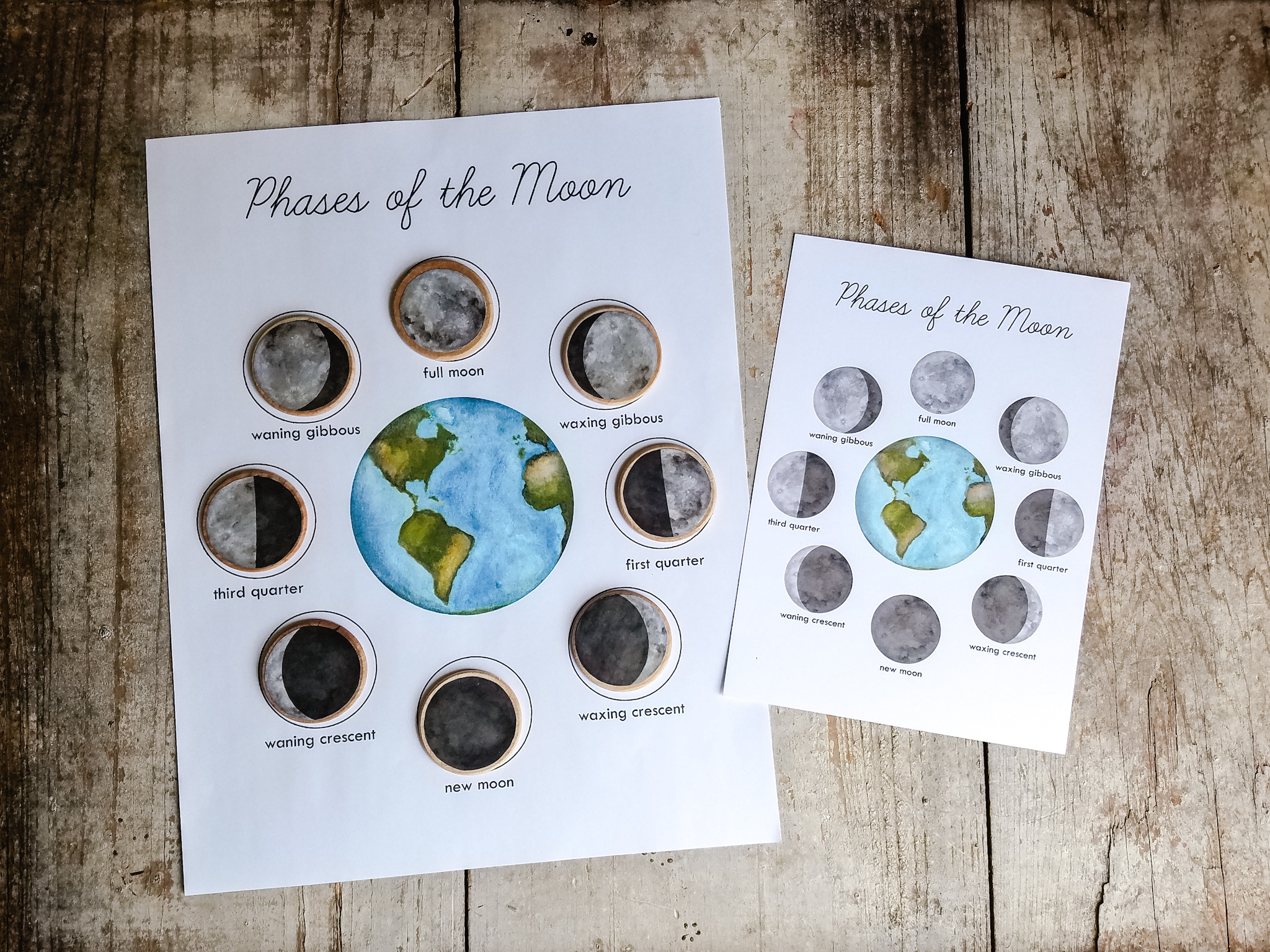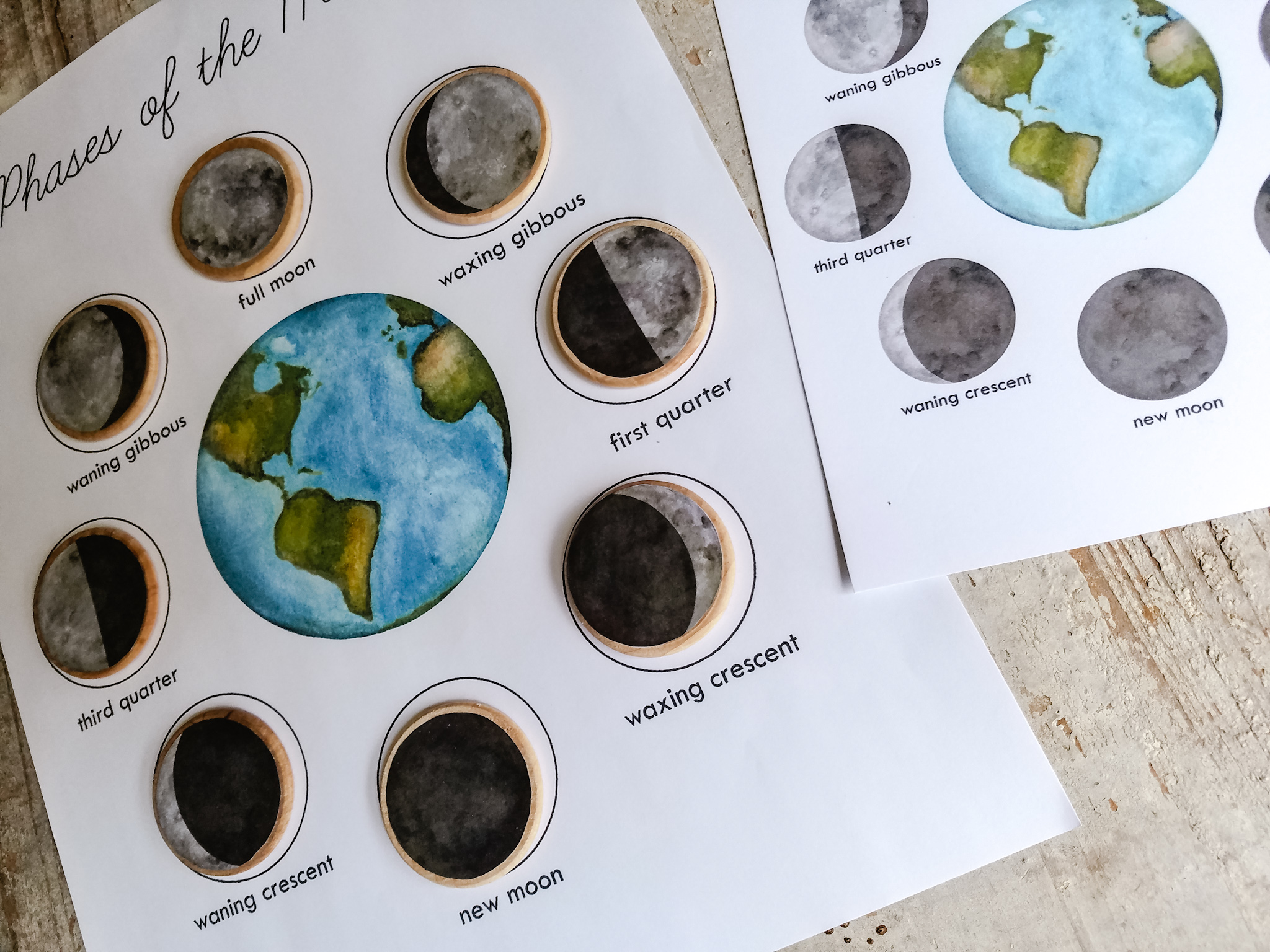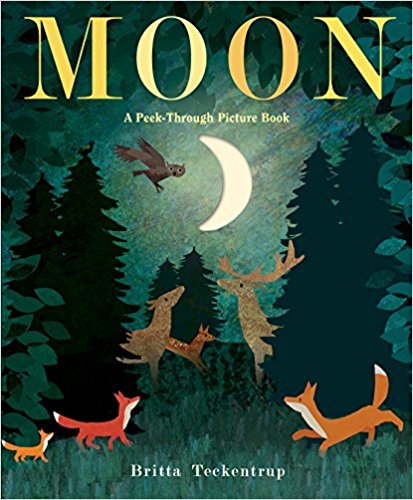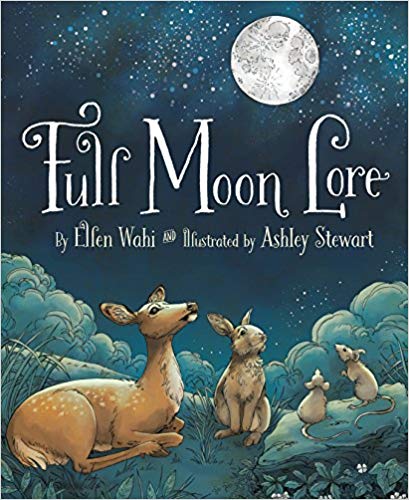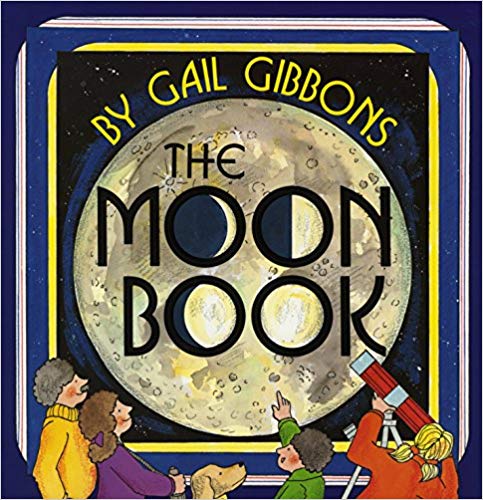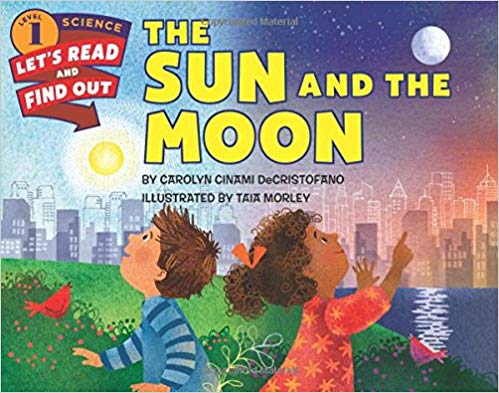Moon Phase Unit Study Activities
I've compiled a list of activities that will compliment the Moon Phase Unit Study! I tried to make sure all projects allow my children to truly be creative and are in keeping with the educational philosophies that inspire me.
Most of the activities I’ve suggested can easily be modified for younger or older children and I try to offer examples for a wide range of ages and capabilities.
***This post contains affiliate links***
Moon Sand Sensory Bin
Although you can use store bought Moon Sand, it's super simple to make at home. I use a 1:8 ratio of oil to flour. Most recipes call for baby oil but I like to use a vegetable oil just in case the moon sand makes it's way into little mouths it's not toxic! Not yummy but safe in small amounts.
Two Ingredient Moon Sand Recipe:
1 cup canola (or other vegetable oil)
8 cups flour
Optional: food coloring, edible glitter
I simply toss the oil and flour into my mixer until it's blended.
Kinetic Sand and black beans also works great for this bin!
For the sensory bin you can offer space figurines, glow in the dark stars, star beads, moon phases wood coins (see instructions below), toy rockets, rocks, anything you have on hand that is on theme and will stimulate your student’s senses. Then, find some tools that will help your child explore the little environment you’ve created. I like to offer spoons, scoops, tweezers, child safe knives, sticks and magnifying glasses. This set of tools is a favorite of ours.
You can simply allow your child to explore the bin using their senses or give them a directive such as “can you find all the star beads and put them in this basket using the tweezers?”
For older children you can offer them all the materials and allow them to create their own sensory bin.
Oreo Moon Phases
Help your child learn to identify the phases of the moon with this popular and fun activity. I've created a worksheet specifically designed for Oreo cookies. We used a butter knife to shape the icing and recreate the phases of the moon.
The worksheet is part of the Moon Phases Unit Study.
Moon Phases Wood Coins
These are a fun and simple little craft you can do along with your little learners. We used the wood coins in our sensory bin, as a sequencing activity and matched them up with our moon phase charts. You could even make two of each and create a little memory game.
You can buy inexpensive wood coins in a variety of sizes at any craft store or on Amazon. Simply print and cut the moon phase images out of the Cut and Paste Activity worksheet and glue them onto the wood coins. I added a thin layer of glue on top of the paper for extra protection. Tip: you may need to experiment with the paper size percentage in your printer settings to get the right fit for your coins.
You could take this craft a step further and paint your wood coins with acrylic paint!
Moon Phases Garland
Love the way this super easy craft turned out! Print two copies of the moon phase Cut and Paste Activity worksheet, cut out the images of the moon, use a long piece of ribbon or string (mine is about a yard long) and glue the two matching images of the moon together with the string in between. Once the glue is dry your garland is ready to hang!
Telescope
We purchased a super inexpensive telescope (from Aldi of all places) for our family and it's been a joy! It's definitely not top notch quality but we have been able to get some pretty neat views of the night sky with it. I think it's been a great purchase for our house and expect to invest in a better quality telescope when our children get a little older.
Here we are looking at a full moon in the evening sky Spring 2018.
Visit an Observatory
If you're lucky enough to live near an observatory, I encourage you to visit! Here's a list of observatories in the US: http://www.go-astronomy.com/observatories.htm
Moon Artwork
We always incorporate artwork into anything we're studying, especially in science and nature. We simply painted the moon by first drawing a circle on paper and then used photos of the moon from a book as reference. Encourage your child to include the craters and peaks of the moon in their painting or drawing. We also painted a landscape of the night sky featuring the phases of the moon. I always take the time to do an art project along side my child.
Moon Phases Journal
Create a journal as you study! This is a lovely way to save your student’s work. I usually use a binder or folder for my preschool aged son, but a nice art journal or composition book is perfect for older children.
Ask your students to paint, color or draw their own illustration of the moon phases. Go out in nature, observe the moon in the night sky and use it as reference for your artwork.
If that isn’t a possibility, use the cards and posters provided in the Moon Phases Unit Study as reference.
I like to sit next to my son and create a drawing or painting along with him. We discuss the phases of the moon and I encourage him to include specific aspects of the moon in his work.
Depending on your student’s age and capabilities, you can ask them to label their moon phases or write down any observations they may have.
This is also a great opportunity for your older students to do some copy work. Ask them to look up information about the moon either in a book or from the info cards provided and copy down the information they find interesting or use their own words to paraphrase what they’ve learned. Another suggestion would be to have them illustrate and label the phases of the moon to create their own chart.
Get your free Moon Observation Journal here.
Book Recommendations for Moon Phases Study
I’ve been pleased with my son’s progress as we study and learn about the Moon. I’m so pleased to share with you what has worked for us. Hope you enjoy!
Stephanie
